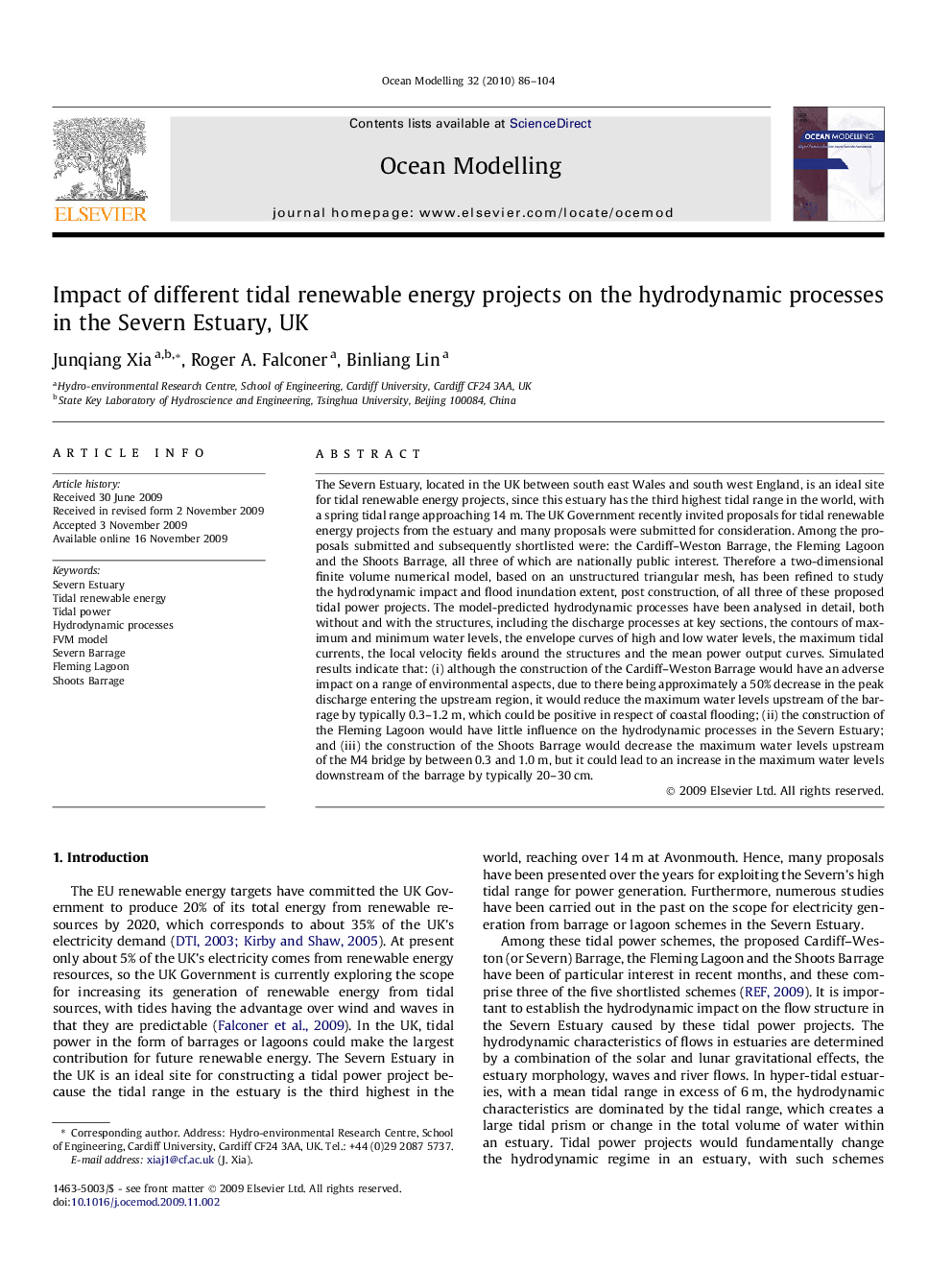| Article ID | Journal | Published Year | Pages | File Type |
|---|---|---|---|---|
| 4552475 | Ocean Modelling | 2010 | 19 Pages |
The Severn Estuary, located in the UK between south east Wales and south west England, is an ideal site for tidal renewable energy projects, since this estuary has the third highest tidal range in the world, with a spring tidal range approaching 14 m. The UK Government recently invited proposals for tidal renewable energy projects from the estuary and many proposals were submitted for consideration. Among the proposals submitted and subsequently shortlisted were: the Cardiff–Weston Barrage, the Fleming Lagoon and the Shoots Barrage, all three of which are nationally public interest. Therefore a two-dimensional finite volume numerical model, based on an unstructured triangular mesh, has been refined to study the hydrodynamic impact and flood inundation extent, post construction, of all three of these proposed tidal power projects. The model-predicted hydrodynamic processes have been analysed in detail, both without and with the structures, including the discharge processes at key sections, the contours of maximum and minimum water levels, the envelope curves of high and low water levels, the maximum tidal currents, the local velocity fields around the structures and the mean power output curves. Simulated results indicate that: (i) although the construction of the Cardiff–Weston Barrage would have an adverse impact on a range of environmental aspects, due to there being approximately a 50% decrease in the peak discharge entering the upstream region, it would reduce the maximum water levels upstream of the barrage by typically 0.3–1.2 m, which could be positive in respect of coastal flooding; (ii) the construction of the Fleming Lagoon would have little influence on the hydrodynamic processes in the Severn Estuary; and (iii) the construction of the Shoots Barrage would decrease the maximum water levels upstream of the M4 bridge by between 0.3 and 1.0 m, but it could lead to an increase in the maximum water levels downstream of the barrage by typically 20–30 cm.
